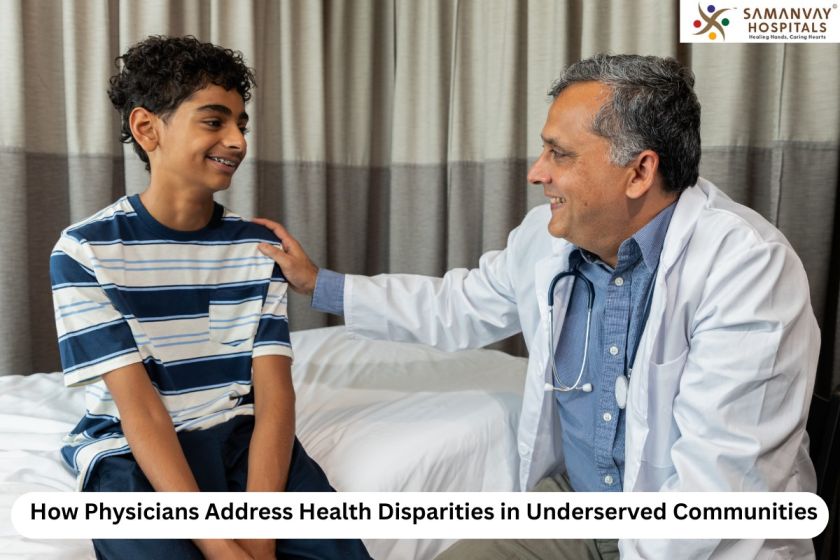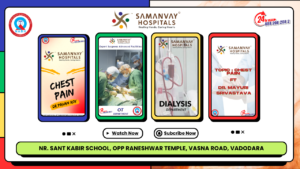
Table of Contents
- Introduction
- Understanding health disparities in underserved communities
- The role of physicians in reducing health disparities
- Strategies physicians use to improve care
- Challenges physicians face in underserved areas
- Successful examples from Indian hospitals
- The importance of community engagement
- How technology helps bridge the gap?
- The future of healthcare in underserved communities
- Conclusion
- FAQs
Introduction
Health disparities affect people across the world. There are unfair differences in health between populations. Those who are vulnerable suffer the most. They have poor health, limited access to therapy, and a high prevalence of disease. Physicians play an important part in addressing this problem. They find it difficult to offer equal therapies to everyone.
However, this blog reveals how physicians help reduce these health disparities. It also offers real-life examples and smart solutions. In addition, hospitals across India and such safe havens as Baroda’s best hospital are making serious efforts. From these efforts, we know the way healthcare can be improved for everybody. Good health is what everyone deserves, regardless of where they live or how much they earn.
Understanding health disparities in underserved communities
Health disparities arise from numerous reasons. Poverty is one of them. The majority of people lack education and proper health care. The poor urban and rural communities are the ones that take the biggest blow. They lack clinics and qualified doctors. People end up being victims of life-threatening diseases like diabetes, asthma, and heart attacks. Unhygienic housing and unsafe living conditions are a major addition to the problem.
Moreover, discrimination also deprives people of the proper care they deserve. These problems are not just about one person. They harm entire families for generations. Physicians in these areas see these struggles every day. They try their best to provide care and support. They work to close these health disparities and improve lives in the long run.
The role of physicians in reducing health disparities
Hence, physicians who serve in underprivileged communities take more time to listen carefully.
Physicians tailor treatment according to individual patients’ requirements. Furthermore, physicians collaborate with other medical professionals to provide integrative care. Their efforts promote healthcare equality and availability.
Strategies physicians use to improve care
Doctors use several methods to address disparities. Some of the most significant methods are
- Cultural Competency Training: Physicians learn about patients’ cultures and values. This eliminates miscommunication and promotes respect.
- Mobile Clinics: Mobile clinics bring healthcare services to remote areas.
- Preventive Care Programs: Doctors focus on preventing diseases from taking hold.
- Community Health Workers: Doctors train workers within their communities to provide basic care and education.
- Telemedicine: Using technology to consult and treat patients remotely.
- Collaborations with Local Organizations: Collaboration increases sharing of resources and trust.
These strategies work wonders. For example, Baroda’s best hospital makes extensive use of mobile clinics in rural areas. Furthermore, telemedicine has been implemented by most hospitals in India to reach far-flung communities.
Challenges physicians face in underserved areas
Physicians endure all this. Funding limits access to drugs and equipment. Infrastructure problems such as roads lead to delays in emergency care. There are times when there are insufficient trained staff to attend to patients in such regions.
Moreover, language is a problem that can result in communication breakdown. Cultural taboo from disease also prevents patients from seeking treatment. Physicians work hard to overcome all these obstacles on a daily basis.
Successful examples from Indian hospitals
Some Indian hospitals lead the way in reducing disparities. One example is Baroda best hospital, which has special features in its outreach programs. It targets poor people’s child and maternal care. Another few hospitals in India that have training for rural health workers.
Therefore, better early detection and treatment of disease result from this training. Some hospitals also provide free health camps for screening and vaccination. These represent how Indian hospitals promote access and quality of care.
The importance of community engagement
Participation of the community is essential to the success of health. Doctors inspire patients to participate in their health. Local leadership facilitates effective dissemination of health messages. Peer groups help patients with long-term conditions.
Additionally, school education programs teach children healthy habits. Trust ensues when communities see doctors as allies. Doctors therefore spend time at community gatherings and in community events. Their engagement ensures improved health outcomes for long periods of time.
How technology helps bridge the gap?
Delivering healthcare has changed because of technology. Telemedicine allows doctors to consult patients online. Reminders for medicines and schedules through mobile health apps exist. Electronic medical records give continuity of care.
Additionally, AI systems forecast disease outbreaks. Baroda’s best hospital used such technology to keep patients better monitored. All over India, these innovations are used for additional hospitals. Technology helps physicians to deliver on-time, quality care in spite of the limitations of resources.
The future of healthcare in underserved communities
The future promises better with persistent efforts. Educating more physicians from underprivileged backgrounds helps retain them. Increased government investment improves infrastructure and availability. However, increasing digital health has the ability to fill in distance gaps.
Indian hospital networks with global partners are strengthened. Actions will reduce disparities in health even further. The persistent commitment of all stakeholders is still necessary, however. Doctors will spearhead efforts towards health equality incessantly.
Conclusion
Health disparities among poorer communities are still a huge problem. Many people in such communities lack proper healthcare. Physicians are extremely important in solving this issue. They work to ensure healthcare is equal and accessible to everyone. They use innovative methods to deliver better care to more people. Indian hospitals like the Baroda Best Hospital show how to improve care.
Additionally, doctors also work with local people and use new technology. Solving these problems needs teamwork and creative thinking. If everyone keeps trying, good health can be possible for all. Learning about doctors’ efforts helps us understand and support their important work in building a healthier future.
FAQs
They usually do not get proper treatment and social problems.
They may use mobile clinics, telemedicine, and community programs.
They provide equipment, training, and outreach to help physicians.
It contributes to increased building of trust and increased patient comprehension.







